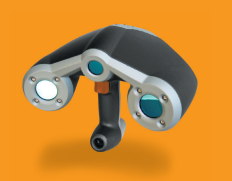‘There’s a huge opportunity for capture’
ROCK HILL, S.C. – Did you miss it? While everyone was recovering from New Year’s parties, 3D printer manufacturer 3D Systems was completing a $135.5 million acquisition of Z Corporation and Vidar Systems, bringing together a company with capabilities in all parts of the capture-process-print pipeline.
Maybe you don’t think 3D printing is likely to spur much in the way of large-scale laser scanning, that it’s only really for small-parts reverse engineering, but that’s not the way 3D Systems is thinking.
“There’s clearly an opportunity in the scanning arena,” said Cathy Lewis, VP of global marketing for 3D Systems, in an interview with SPAR. “Just think of all the things that don’t exist in CAD today that need to exist in CAD … Look at China, how many of their heritage architectural locations are not documented in CAD and could not be replaced today. There’s a huge opportunity to capture on that, as with all the museums and architectural digs.”
Now 3D Systems has Z Corp’s handheld scanners in house and can really look at perfecting that scan-to-print workflow. “What’s the best scanner for the application, and what technology fits with that application? There’s still a lot of options with scanning, just as there are with 3D printers,” she said. “Some are very robust, some fine featured, some just very durable. I think customers are still looking for that guideline: How do I pick the best capture for my situation?”
Further, 3D Systems wants to make every piece of the process easier. Designers “don’t want to learn a new language,” she said, and thus the point clouds need to come into the software they’re already using, and that software needs to integrate with the printers that are producing the end product. And as artists start to incorporate captured data into their creations, morphing them into something completely different, possibly, “they’re going to need a lot of help” in understanding the technology.
“The device itself over time needs to become less important,” Lewis said. “They need to be very mobile and simple devices.” She said photogrammetry-based solutions like Autodesk’s 123D Catch are likely the future for growing 3D printing on the consumer side. “This consumer-level scanning, a quick grabbing of something that they can do something with, I think that could be big,” she said. “What will that mean for the laser scanning side, plus the printing side, over the next couple years?”
On the printing side, 3D Systems has any number of ideas about expanding the consumer-based reach of 3D printing. Will we see Kinko’s-style 3D printing stores? Probably. Will toy stores have 3D printers on site that allow you pick the color and size of the toy you want and print it out on demand? Maybe. Will kids have 3D printers in their rooms that allow them to just print out more Legos or Army men or plastic pirates when they inevitably break?
Well, that’s what Cubify is for.
But that doesn’t mean 3D printing is just for the masses. The largest 3D Systems printer can print out a car’s dashboard in one go. 3D printing has been used in the automotive and aerospace industries for decades now. Lewis reports that more than 100 parts for F-18-class fighter jets are being made with 3D printing.
Expect 3D printing to more often be in industrial arenas going forward. “As more and more people step into this solution area,” said Lewis, “there’s a chance to educate more people about the equipment that’s available.”






